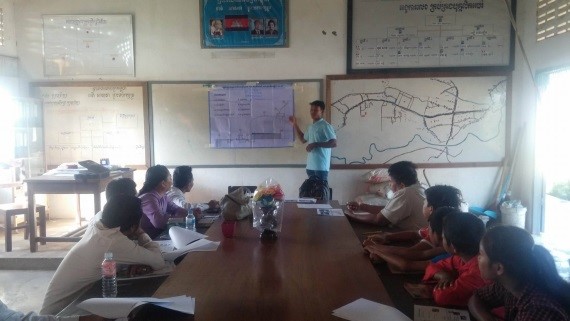By Lachlan Guthrie – originally published on his blog.
Recently my friend and colleague Rov Sokkhai wrote a small case study about the operations and maintenance training at RainWater Cambodia. The excellent case study shows that empowering people ends with better results and I thought I would share it.
RainWater Cambodia was established in 2004 and is managed by a dynamic group of Cambodian people with technical support from Engineers without Borders Australia (EWB). RWC is local NGO which focuses on Sanitation and Hygiene improvement and constructed of WASH facilities in rural Cambodia. So far, RWC have educated many stakeholders in sanitation and hygiene. Therefore, RWC has much experience in this sector.
Currently, RWC is implementing the School Water, Sanitation and Hygiene Improvement Project (SW-SHIP) in four provinces and 88 targeted schools. This project is funded by World Food Program Cambodia. There are 88 tanks (20m3) provided to targeted schools. To ensure the standard of quality in construction and proper operation and maintenance, this project has provided trainings to the school principals and school supporting committees on how to conduct construction inspection and material for using. Significantly, RWC added the O&M training to stakeholders to ensure proper maintenance.
The O&M training was completed in three parts, first part is collecting water, the roof, gutter, pipe and first flush system. Second part is the storage part, includes body tanks, over flow/outlet pipe, pipe of water level, a driven valve at the bottom and inlet hole on the roof. Third part is distribution part, the valve box protection for distribution, drinking fountain and filtration box. After, the training was provided to SSC by RWC, the SSC well understood and were commit to follow the training.
Operations and maintenance training
RWC staff observed that Tropaing Prasat Primary school located in Tropaing Prasat District, Oddar Manchey Province had an innovative idea to defend the WASH facility in their school by building a cage to protect the drinking fountain from animals and waste water. In an interview the school principle mentioned that during the training, RWC staff suggested him to find out any local resources to protect the valve of drinking fountain, as it can damaged by animals. Especially, it was good looking and did not waste much water. Therefore, because of his high commitment, after the tank was completed 100%, he allocated school budget to buy the material to build cage for protect the drinking fountain properly.


